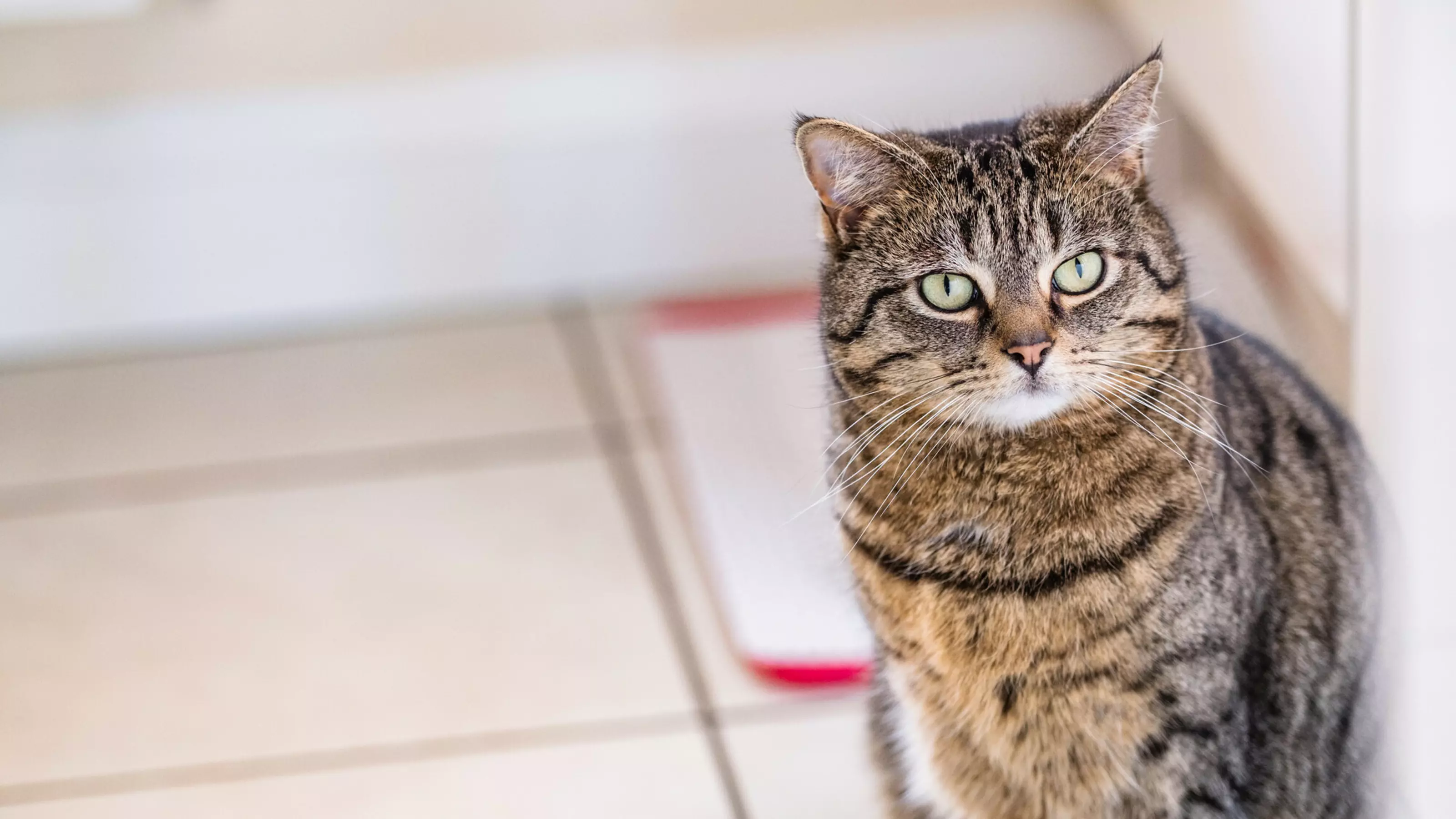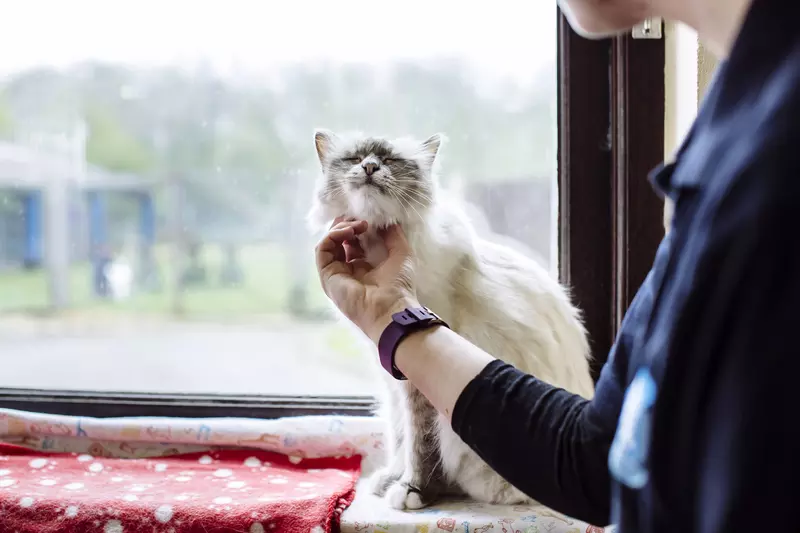
Arthritis in cats
While arthritis in cats is very common, it can be difficult to spot.
What is arthritis?
Arthritis is a common condition which causes inflammation in the joints. It makes movement for cats painful and difficult. Osteoarthritis is the progressive deterioration of the joints, causing the surfaces of the joints to become rough and uneven. It can affect your cat's elbows, hips, knees and ankles.
Arthritis is extremely common in cats, and over 90% of cats over the age of 12 show signs of arthritis when X-rayed. But as cats instinctually hide signs of pain, it can often be difficult for people to spot the signs.
What are the signs of arthritis in cats?
Arthritis is a progressive disease with symptoms that gradually develop and worsen over time. Since cats are very good at hiding pain, arthritis in cats often goes unnoticed until the condition has become severe, affecting their quality of life.
Stay vigilant to changes in your cat’s behaviour – they may have difficulty jumping up on high surfaces, using stairs or the cat flap. Contact your vet if your usually active cat is spending less time outdoors or playing, or if you notice any signs of discomfort.
Other signs of arthritis in cats include:
- limping or lameness
- a stiff gait
- tiredness
- weight loss and muscle wastage
- dirty or matted fur due to difficulties with grooming, especially on the back, back legs and tail
- reluctance to be touched on painful parts of the body
- irritability
- overgrooming of painful of joints (you may notice stained fur or hair loss)
What causes arthritis in cats?
Most commonly, arthritis is caused by wear and tear on the joints, and affects many older cats.
But arthritis in cats can also be the result of:
- poor body condition and obesity
- poor body conformation (the shape and structure of the body)
- hip dysplasia and elbow dysplasia
- past injuries, such as muscle injury, fracture or ligament damage
How can arthritis be diagnosed?
Your vet will usually carry out a physical examination to test for stiffness, pain and/or swelling of the joint. X-rays may be offered but are not necessary in every case.
Managing arthritis in cats
Sadly arthritis in cats cannot be cured. But there are many ways the pain can be managed to maintain your pet’s quality of life.
Weight control
It’s important to keep your cat at a healthy body weight. This will reduce the pressure on sore joints. Excess fat can also make inflammation worse. Speak to your vet or vet nurse about starting your cat on a suitable diet if they’re overweight.
Exercise moderation
Keeping your cat moving will help to prevent them from getting stiff. Try not to over-excite playful cats, but spend time encouraging them to exercise a little each day.
Environmental modification
Ensure that your cat can easily and comfortably reach their favourite spots and toilet area. If your cat uses a litter tray, make sure it's in an easily accessible area and is not too deep so that they can comfortably get in and out of it.
You can provide ramps and steps to help your cat with climbing, or place their beds lower down. A soft, comfortable bed can reduce the pressure on your cat’s joints – orthopaedic memory foam is ideal for cats with arthritis.
If your flooring is slippery, consider placing carpets or rugs and mats that prevent your cat from skidding when getting around the house.
Medical treatment
Anti-inflammatories and/or painkillers are one of the most common treatments for arthritis. They can reduce pain and improve your cat's mobility, which helps to prevent them from getting stiff. Anti-inflammatory medication can come in daily liquid or tablet form – if you're struggling to administer medication for your cat, you can give them with food.
Your vet may also advise a joint supplement or special diet for your cat alongside medication.
Important
Never give your cat medication without speaking to your vet first.
Surgical treatment
If your cat has had a traumatic injury, surgery may be beneficial for arthritis. But in most cases of arthritis, it is not required.
Can arthritis be prevented?
The prevention of arthritis is better than treating it. While age-related arthritis cannot be prevented, there are steps you can take to prevent or slow the development of arthritis in your cat. Maintaining your cat's healthy weight is the most effective way of keeping arthritis at bay.
You can also adjust your cat's environment to reduce the risk of injury. Cats enjoy climbing up on high spaces, which can have an impact on their joints when they land. Climbing trees with varied levels can help them reach the ground gently and safely. Alternatively, place furniture around surfaces where they tend to climb, such as sofas or a pet-friendly ramp.
Since the risk of arthritis is increased due to hip dysplasia, you can reduce this risk with good breeding practices. Hip dysplasia is more common in certain breeds such as Maine coons, and cats diagnosed with hip dysplasia should not be used for breeding.
What is the prognosis for cats with arthritis?
When treatment for arthritis is started early, and steps are put in place to prevent further injury, cats with arthritis can enjoy a good quality of life for some time.
Since arthritis is a progressive disease, it will unfortunately get worse over time. If your cat's mobility and quality of life worsens and they are suffering, euthanasia may be advised.
If you feel your cat is in pain or not responding to treatment as well as they used to, always speak to your vet for further advice.
Page details
Published
• 27 November 2023
Next review
• 27 November 2026






